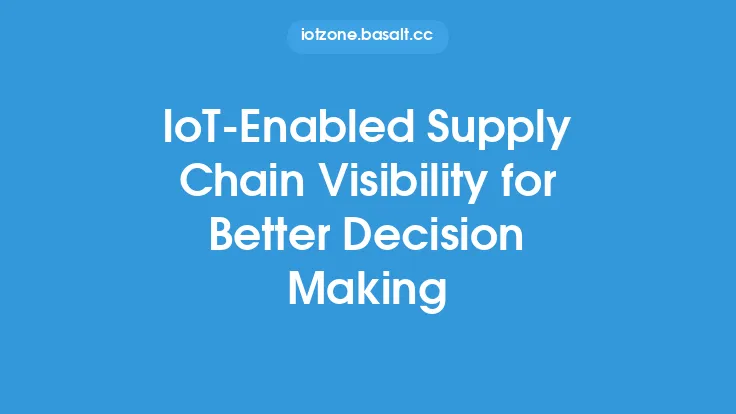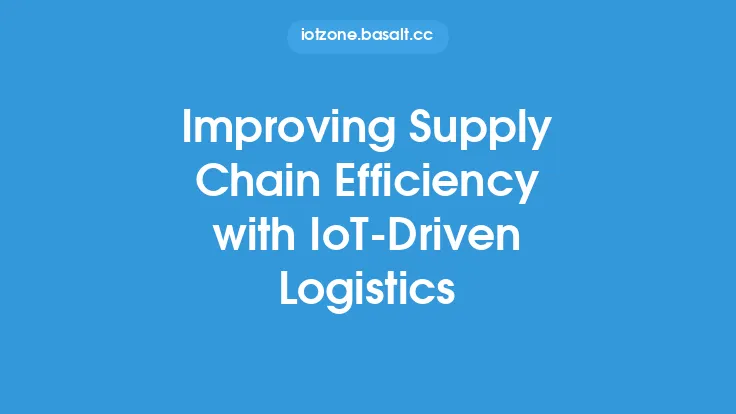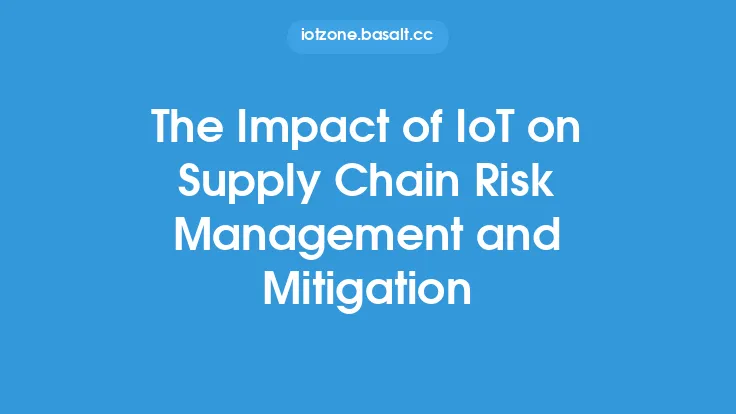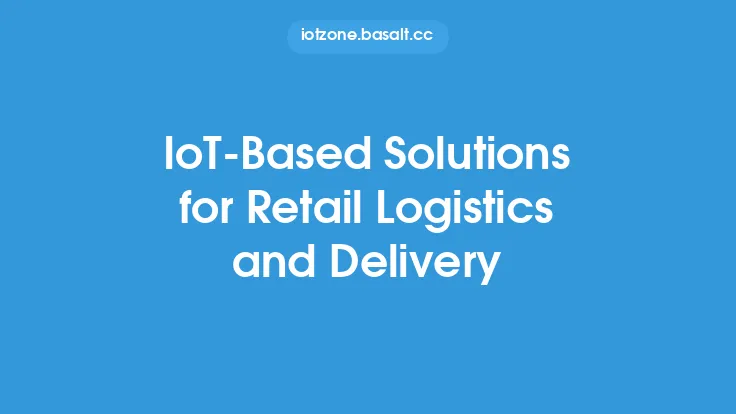The logistics and freight management industry has undergone significant transformations in recent years, driven by the increasing demand for efficient and reliable supply chain operations. One of the key drivers of this transformation is the Internet of Things (IoT) technology, which has enabled the development of IoT-enabled logistics and freight management systems. These systems leverage the power of IoT devices, sensors, and data analytics to optimize supply chain operations, reduce costs, and improve customer satisfaction.
Introduction to IoT-enabled Logistics and Freight Management
IoT-enabled logistics and freight management involves the use of IoT devices and sensors to track and monitor the movement of goods, vehicles, and equipment in real-time. This enables logistics and freight companies to optimize their operations, reduce transit times, and improve the overall efficiency of their supply chain. IoT-enabled logistics and freight management systems can be applied to various modes of transportation, including road, rail, air, and sea.
Key Components of IoT-enabled Logistics and Freight Management
IoT-enabled logistics and freight management systems consist of several key components, including:
- IoT devices and sensors: These devices and sensors are used to track and monitor the movement of goods, vehicles, and equipment in real-time. Examples of IoT devices and sensors used in logistics and freight management include GPS trackers, RFID tags, and temperature sensors.
- Data analytics: Data analytics is used to analyze the data generated by IoT devices and sensors, and to provide insights into supply chain operations. This enables logistics and freight companies to optimize their operations, reduce costs, and improve customer satisfaction.
- Cloud-based platforms: Cloud-based platforms are used to store and process the data generated by IoT devices and sensors. These platforms provide a centralized repository for supply chain data, and enable logistics and freight companies to access and analyze this data in real-time.
- Mobile apps: Mobile apps are used to provide real-time updates and notifications to logistics and freight companies, and to enable them to track and monitor their supply chain operations on-the-go.
Benefits of IoT-enabled Logistics and Freight Management
IoT-enabled logistics and freight management offers several benefits to logistics and freight companies, including:
- Improved supply chain visibility: IoT-enabled logistics and freight management provides real-time visibility into supply chain operations, enabling logistics and freight companies to track and monitor the movement of goods, vehicles, and equipment.
- Reduced transit times: IoT-enabled logistics and freight management enables logistics and freight companies to optimize their routes and reduce transit times, resulting in faster and more reliable delivery of goods.
- Improved customer satisfaction: IoT-enabled logistics and freight management enables logistics and freight companies to provide real-time updates and notifications to customers, resulting in improved customer satisfaction and loyalty.
- Reduced costs: IoT-enabled logistics and freight management enables logistics and freight companies to reduce their costs by optimizing their operations, reducing fuel consumption, and improving the utilization of their assets.
Applications of IoT-enabled Logistics and Freight Management
IoT-enabled logistics and freight management has several applications in the logistics and freight industry, including:
- Freight tracking and monitoring: IoT-enabled logistics and freight management can be used to track and monitor the movement of freight in real-time, enabling logistics and freight companies to optimize their operations and reduce transit times.
- Vehicle tracking and monitoring: IoT-enabled logistics and freight management can be used to track and monitor the movement of vehicles in real-time, enabling logistics and freight companies to optimize their routes and reduce fuel consumption.
- Warehouse management: IoT-enabled logistics and freight management can be used to optimize warehouse operations, including inventory management, order fulfillment, and shipping and receiving.
- Cold chain management: IoT-enabled logistics and freight management can be used to monitor and control the temperature of perishable goods during transportation, enabling logistics and freight companies to ensure the quality and safety of these goods.
Technical Requirements for IoT-enabled Logistics and Freight Management
IoT-enabled logistics and freight management requires several technical components, including:
- IoT devices and sensors: These devices and sensors must be able to withstand the rigors of transportation and logistics operations, and must be able to transmit data in real-time.
- Data analytics software: This software must be able to analyze the data generated by IoT devices and sensors, and provide insights into supply chain operations.
- Cloud-based platforms: These platforms must be able to store and process the data generated by IoT devices and sensors, and provide a centralized repository for supply chain data.
- Mobile apps: These apps must be able to provide real-time updates and notifications to logistics and freight companies, and enable them to track and monitor their supply chain operations on-the-go.
Challenges and Limitations of IoT-enabled Logistics and Freight Management
IoT-enabled logistics and freight management faces several challenges and limitations, including:
- Data security: The use of IoT devices and sensors in logistics and freight management raises concerns about data security, including the risk of data breaches and cyber attacks.
- Interoperability: The use of different IoT devices and sensors in logistics and freight management can create interoperability challenges, including the need for standardized communication protocols and data formats.
- Cost: The implementation of IoT-enabled logistics and freight management systems can be costly, including the cost of IoT devices and sensors, data analytics software, and cloud-based platforms.
- Complexity: The use of IoT devices and sensors in logistics and freight management can create complexity, including the need for specialized technical expertise and training.
Future of IoT-enabled Logistics and Freight Management
The future of IoT-enabled logistics and freight management is promising, with several trends and developments expected to shape the industry in the coming years. These trends and developments include:
- Increased use of artificial intelligence and machine learning: The use of artificial intelligence and machine learning in logistics and freight management is expected to increase, enabling logistics and freight companies to optimize their operations and improve customer satisfaction.
- Greater use of blockchain technology: The use of blockchain technology in logistics and freight management is expected to increase, enabling logistics and freight companies to improve the security and transparency of their supply chain operations.
- Increased focus on sustainability: The logistics and freight industry is expected to place greater emphasis on sustainability, including the use of alternative fuels, electric vehicles, and green logistics practices.
- Greater use of IoT devices and sensors: The use of IoT devices and sensors in logistics and freight management is expected to increase, enabling logistics and freight companies to optimize their operations and improve customer satisfaction.





